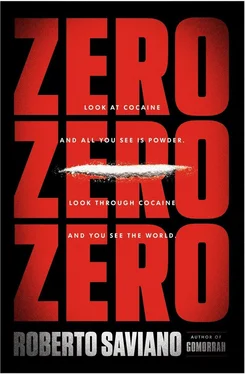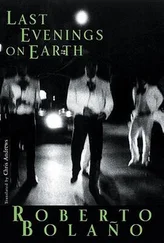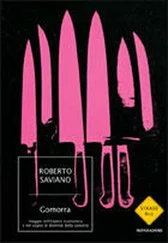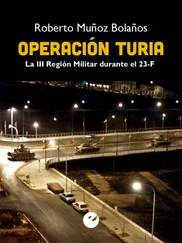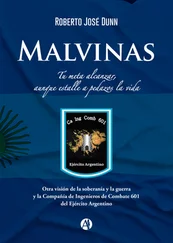Intelligence and antidrug services fear that what’s happening is something similar to when major airline companies renounced their old smaller planes for the new jumbo jets; the money and the need are both there. Submarines are becoming affordable enough for cartels, enough to form a fleet. Between 2005 and 2007 the Colombian navy confiscated eighteen of them off the Pacific coast, identified nearly thirty more, and estimated the existence of about a hundred. But their widespread use can’t be reduced to simply a question of cost. It is a technological progress story whose pioneer was none other than Pablo Escobar, who boasted having two submarines in his immense naval fleet. Innovation is driven in part by the irrational desire to emulate some legendary figure, to prove that you’re just as good because you can match or surpass him in power and riches. But the real tangible opportunities arrived when the Russian mafiosi began settling in Florida and offering to sell Soviet arsenals’ pièces de résistance to the Colombians.
For nearly a decade it seemed to the Americans engaged in the war on drugs that the narcos’ drug subs were like the Flying Dutchman: ghost ships, whose evanescent wake they could trail but which they could never capture, to the point of suspecting that they were nothing but legends, sailors’ superstitions, marine myths. But in 2004 the Americans dealt a decisive blow to the Norte del Valle cartel, the organization that took over in Colombia after the decline of the Medellín and Cali cartels. They arrested about a hundred members and extradited the real big shots to the United States, starting with the godfather, Diego Montoya, known as the Cyclist. Agents confiscated millions of dollars in cash, gold ingots, luxury goods, and properties worth $100 million. And they finally get their hands on an actual submarine: a handmade, fiberglass drug sub capable of reaching the California coast. It’s not clear whether the cartel men avoided interception by decrypting U.S. naval codes or if — more likely — they were tipped off by a Colombian admiral in their service.
Even today drug subs are being built in shipyards hidden in the South American jungle. No one knows how many the narcos have had made, or who and how many people it takes to assemble and test them, or which tributaries — or tributaries of tributaries — of the Amazon are used to get them to the ocean, or how many have been lost at sea along with their crews. No one knows how many have been sunk to avoid being confiscated, or how many managed to complete their voyage. But there’s another incredible aspect to consider. All this expenditure of strength, means, and money is poured into the construction of something that’s often treated as a maneuverable disposable. Or maybe it’s better to say that the more modest drug subs are like those animal species whose lives span only a few reproductive cycles. After they’ve been lightened of their load a few times, they’re left to sink. The crew flies back home by plane. Millions and millions of dollars, literally dumped into the sea.
The semisubmersible the Mexican navy recovered in the summer of 2008, in the waters of the Pacific near Salina Cruz in the state of Oaxaca, was worth about $2 million. The strange green splotch they’d sighted turned out to be a slender craft thirty-two feet long, loaded with nearly six tons of cocaine. The goods onboard were Colombian, as were the four crew members who came ashore without any resistance. But the consignee was Mexican. Alberto Sánchez Hinojosa, known as El Tony, one of the Gulf cartel lieutenants after Osiel Cárdenas Guillén’s capture, was arrested about two months later in the southern state of Tabasco.
More recent, sophisticated models are regular submarines, slightly larger and capable of reaching California from Central America with ease. So far only three have been captured, but the fact that all three were intercepted within a short space of time suggests that many more are being used.
The only known attempt so far to export the idea to the Mediterranean had a tragicomic ending. Two shady Spanish operators put up the money, and an “engineer” sets up a workshop where he can build a semisubmersible — nothing fancy, thirty feet long, needing only one person to navigate. All this in Galicia in 2006, the most popular place in Europe for cocaine transfers. The three manage to contact the right people, for whom they have a reverential fear: the Colombians. They sell their homemade creation for the modest sum of €100,000. The Colombians plan on using it for unloading a mother ship, so the engineer needs to deliver his jewel right after the trial run. But the sub starts yawing strangely and the sorcerer’s apprentice panics. He’s as terrified of suffocating to death in the Atlantic as he is of the clients to whom he’s just sold a lemon. He figures that the only way to get off and to save his skin is to deliver the sub into the hands of the enemy — that way he can tell the Colombians that the police intercepted it. But the police don’t play along. The investigators wait for the engineer and his associates to take delivery of some hashish to pay off their debt to the Colombians and then they arrest them. It turned out not to be so easy to imitate the pros, and the three Spaniards who tried it had to face the fact that they’re inferior to the inhabitants of their former colony.
But Europe has already produced a new species of seafarers who are nothing like those pilots in the 1980s and 1990s, whose motorboats were loaded with cigarettes, hired hands of the Camorra or the United Sacred Crown. In recent years the most common type of vessel on which cocaine has been found isn’t the old merchant ship, container ship, fishing boat, or motorboat. It’s a sailing vessel. Big catamarans, wooden yachts, sailboats that could compete with Giovanni Soldini’s. Dream boats, anchored in the Caribbean, ready to take you island hopping, from one white beach to another, but more appropriate for those who really love the sea, who want the adventure of an ocean crossing. But those who pay the most for letting the skippers pursue their true vocation, displaying their ancient knowledge of currents and favorable winds, aren’t interested in coming onboard. They’re narco-traffic brokers and emissaries of organized crime. But not only: They’re also friends of the summer, the privileged bourgeoisie who want to try going from easy use to easy money, squeezing cash, coke, and adrenaline out of the same exciting enterprise.
Today the Blaus VII is a school ship for the Portuguese military marines. A splendid, seventy-five-foot sailing vessel with two masts made entirely of wood, painted an elegant deep blue. It was intercepted in February 2007 a hundred miles northwest of the Madeira islands, which belong to Portugal but are closer to the coast of North Africa. The Portuguese navy and judicial police found two tons of cocaine that embarked in Venezuela, ready for delivery to Europe. They arrested the tripulantes, who this time were the entire crew: all Greeks except for the skipper, Mattia Voltan, from Padua. He wasn’t yet twenty-eight years old, but the Blaus VII, worth about €850,000, was registered in his name. He’d been driven to Venice by Andrea, a guy his same age, where he caught a flight to Barcelona to join the ship and its crew, which were waiting for him in Portugal. Before they left Andrea’s father showered them with advice: “Take a good look before you start wandering around,” he admonished them on the phone from Dubrovnik, where he lives with his youngest son, Alessandro, and manages two companies he opened in Croatia. An Italian entrepreneur who, like so many others, migrated east. He also wanted to know if Mattia looked presentable, and Andrea, with that typical impatience kids show overanxious parents, reassured him: “Yes, he shaved, and I cut his hair. I went to the house myself to get the rasp .”
Читать дальше
